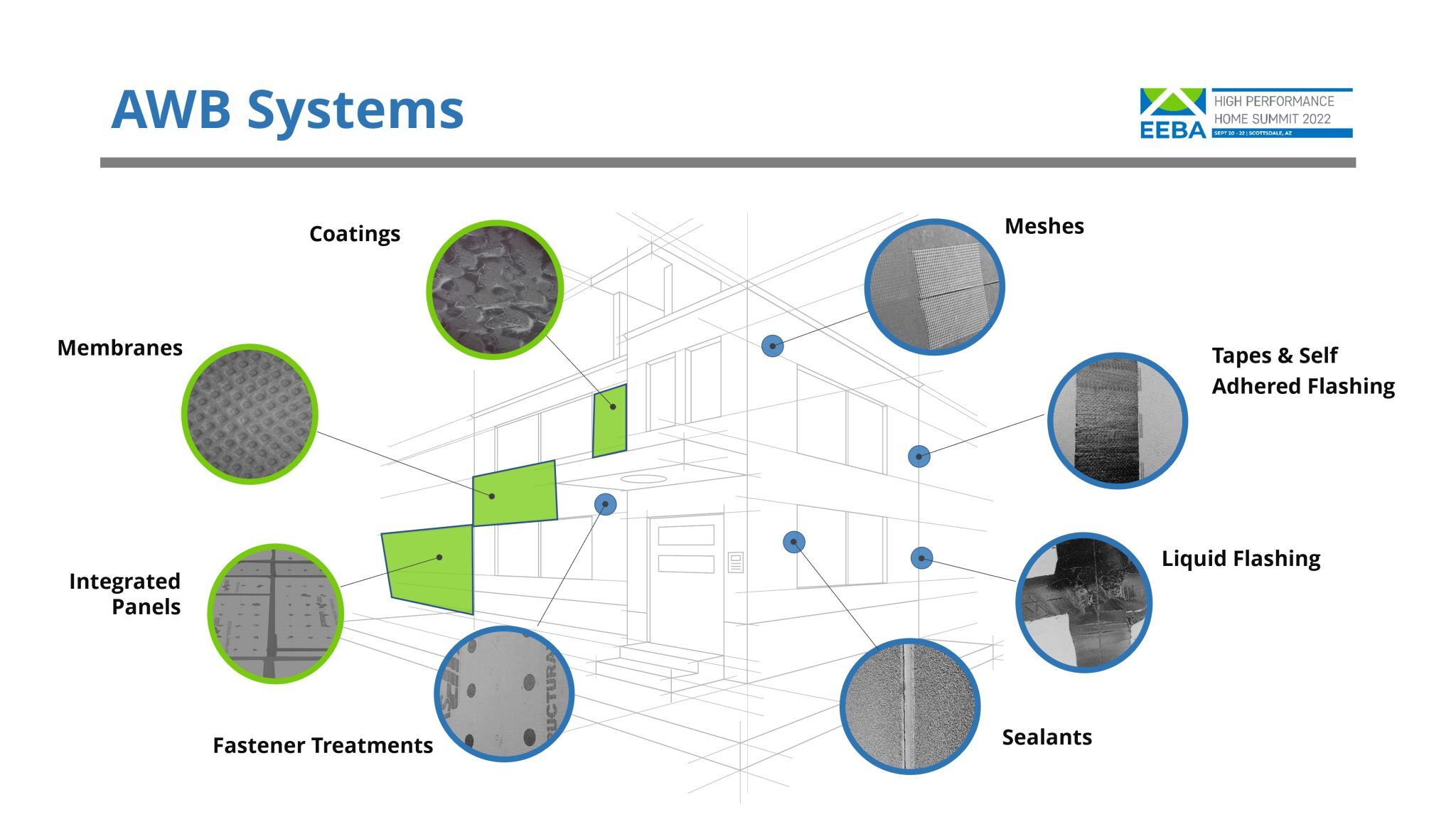Tags: #architecture #buildingdesign #buildingenclosures #buildingenvelopes #buildingmaterials #buildingscience #materialsscience

ABSTRACT: The Air and Water Barrier is a system. It is comprised of materials having a common role of continuity and a common namesake purpose. While its importance in resilience is undeniable, the system’s proven performance is too often inferred, not tested. And when tested as an assembly, what we really test is their installation, not their inherent attributes as a collective whole. True resilience demands more. Predictive value of the AWB System must account for conditions that are not completely known, installation practices having reasonable variances, and durability that spans many decades. High predictive value cannot emerge from simply emulating expected service conditions or even extremes that might befall fully exposed assemblies. Therefore, test methodologies must reflect greater rigor, longer duration, and increased resolution. Otherwise, buildings become our proving grounds, and resilience is left unfulfilled. AWB components must be optimized and synergized. Their interfaces must resist air and water reliably and robustly. The system must be tested and proven as an integrated whole. And this whole of performance must meet new demands in extremes.